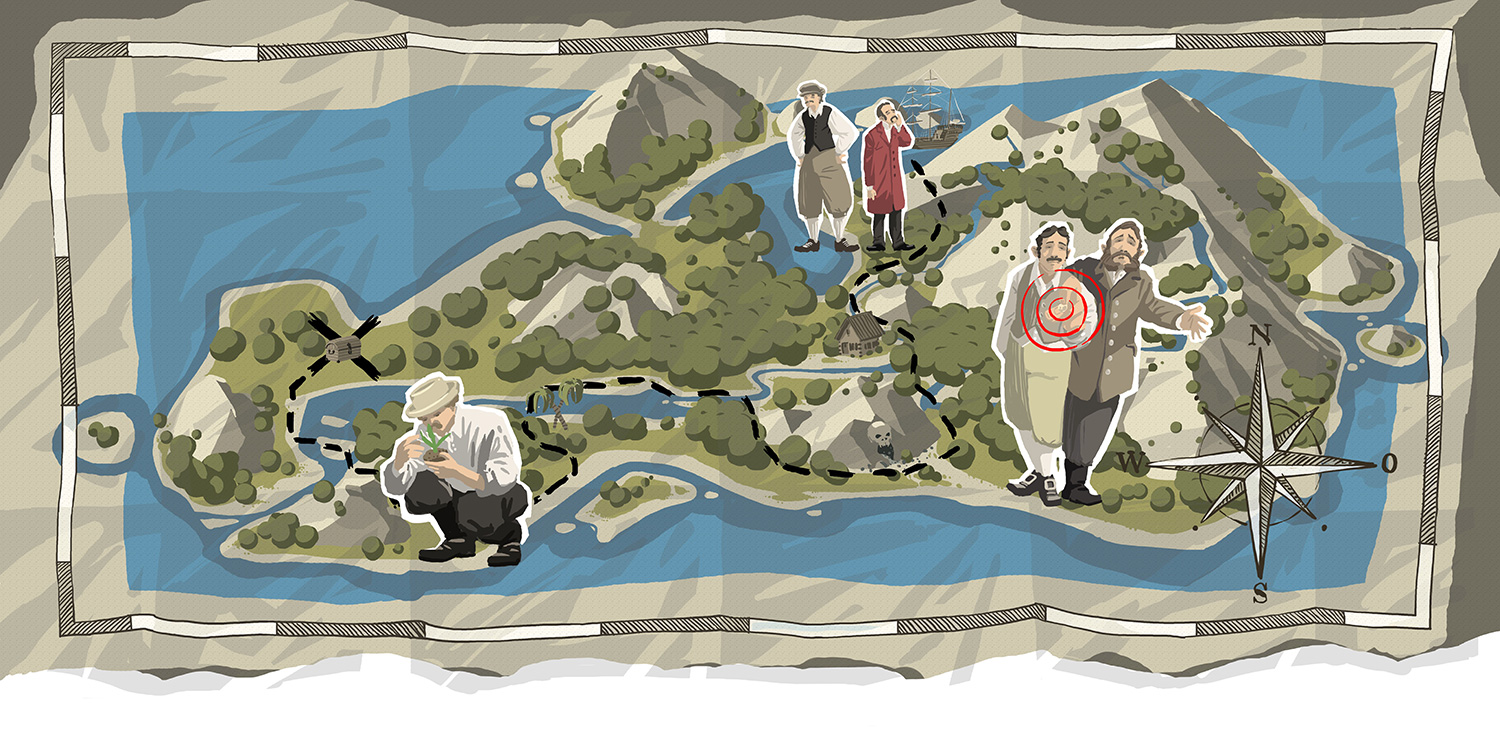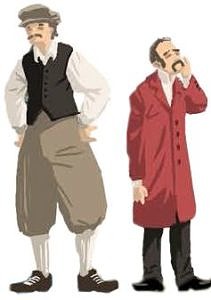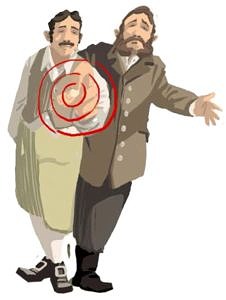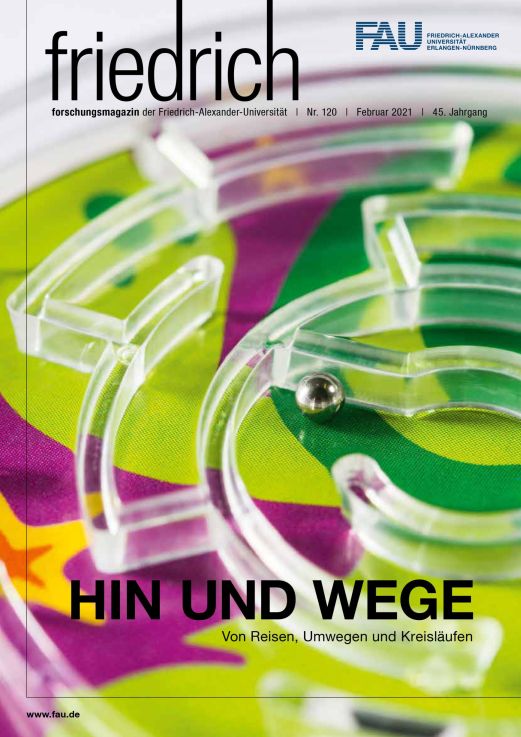Chasing the unknown
Not all scientific knowledge is acquired at the desk or in the laboratory or observatory: On historical research expeditions as a special place for knowledge production.
The combination of knowledge and travel awakens curiosity and spirit of adventure: Accounts of the discoveries of bold wayfarers, who explored far distant territories and changed the world with their findings, have helped shape the myth of the research expedition. The whole world is familiar with names such as Alexander von Humboldt, and expeditions such as that of the German ship Polarstern to the Arctic are part of a long tradition.
The first research expeditions with the explicit goal of gathering scientific knowledge were ventured in the 18th century and often had the difficult task of winning over sceptics. At the time, such undertakings were often believed to be completely opposite to scientific investigation in the laboratory and rather restricted in terms of physical separation from other scientists, limited reproducibility, a lack of opportunity to validate results by publishing them in (scientific) journals, the inaccessibility of many places, minimal influence on local conditions, short duration as well as other considerable material and physical limitations.
Scientists bold enough to conduct research under these circumstances not only had to be very well prepared but also able to show credibly that the research results were reliable. To be able to transfer the results of research expeditions into the inventory of validated knowledge, the scientific community subjected their primary method of acquiring knowledge during expeditions, scientific observation, to the greatest possible regulation, control and habitualisation. Explorers therefore followed stringent procedures so that others who had not accompanied the expedition could also understand their methods.
Planning the unforeseeable
In the early modern era, the art and science of expeditions was widely debated and ideal models for scientific observation were formulated in papers on travel methods that were distributed throughout Europe. Such travel guidelines and instructions, along with documentary material from expeditions including notes, sketches, collections, diaries and publications, can be used to reconstruct a pattern of observational research in the 18th century.

The expedition’s research topic was determined beforehand, depending on the person’s previous education and preparation for the voyage. Travel guidelines specified the knowledge and skills an individual should have in order to travel safely and expediently. Leopold von Berchtold’s Instructions for Travellers (1791), for example, lists the disciplines in which skills are ‘absolutely indispensable’ to an expedition: Law, natural history, mineralogy, metallurgy, chemistry, mathematics, mechanics, hydrostatics, hydraulics and architecture, perspective drawing, geography, navigation and shipbuilding, farming, languages and arithmetic. He also writes that explorers need a ‘quick and legible hand’, along with drawing skills, a sound physical constitution, medical know-how, good taste in music, a feeling for art, knowledge of human nature – and must be able to swim. And finally, an extensive ‘preliminary familiarity’ with the countries they plan to visit. In preparation for their journey, explorers read printed catalogues of research questions or else compiled their own – questions which set out their expectations for what they hoped to encounter and study.
FAU researcher on expeditions
Tracking glacier change: Prof. Matthias Braun in Antarctica
Excavations in the steppes: Archaeologist Prof. Mischka in Rumania
Travel guidelines also attempted to capture the persona of the scientist. They counterposed his fundamental uncontrollability with a morally highly-valued concept of focused attention. The explorer should be a person of integrity, an observer with trained perception, in whom passion, enthusiasm and curiosity are united with intense concentration on the research object, which he should study with scientific rigour, receptively, openly and critically.
Like the materials, equipment and resources they brought with them from an established scientific context, the approach of meticulous observation ensured the explorer’s could bring back comprehensible and transferable results.
Mastering adverse conditions
While on his travels, however, the explorer was – of necessity – a genius at improvisation: His working conditions were influenced by a fluctuating tension between wealth and paucity of resources such as space, time and material. What the explorer chose to study on their expedition was decided by a flexible criterion: Whether something was remarkable or not. All those phenomena that attracted the attention of the extensively educated explorer, with which he could analyse and produce results – and which accordingly seemed noteworthy – were in this way conceptualised as a scientifically worthwhile selection.

Arrival in unknown surroundings was a thrilling moment filled with suspense, expectation and a thirst for action, which the researchers looked forward to with excitement and prepared for meticulously. Humboldt, for example, described his first trip ashore in Tenerife with his companion Aimé Bonpland in his diary as follows: ‘Our imagination was stretched to the most pleasurable degree. With what delight we busied ourselves during the three hours before, packing together our plant boxes, thermometers, nitric acid and hammers! The first, second, third step that we would take on land, that one of us must go right and the other left in order to discover more – all this was calculated beforehand. You need to have been in this situation yourself in order to appreciate it entirely.’ (Faak (ed.) / Humboldt 2000, 75). Collecting items as quickly as possible sometimes, not being too choosy and carefully inspecting the finds later on was also the strategy of French botanist Joseph Pitton de Tournefort in Asia Minor. Since the caravan with which he was travelling often moved on during the night, he collected plants in the dark by moonlight, crawling around on all fours, and only examined his harvest more closely in the light of dawn.
Undercover mission
Alexander von Humboldt, James Cook or Louis Antoine de Bougainville: in the 18th century explorers were invariably men. Really? If we take a closer look, it turns out that the botanist Jean Baré who took part in Bougainville’s expedition to the South Pacific in the 1760s was actually a woman. As women were not permitted to take part in the expedition, Jeanne Baret disguised herself as a man and joined the crew as a valet and assistant to the botanist Philibert Commerson. It was not until they encountered the indigenous population on Tahiti that anyone saw through her disguise. Luckily, her deception had no serious consequences even once her true identity was revealed. Quite the contrary: On Mauritius, Commerson and Baret disembarked together and successfully gathered more than 6,000 species of plant.
To record their observations, the explorers used techniques for documenting evidence that were independent of a specific location and comprised different combinations of three elements: Description and conservation of objects, and illustrations. These techniques detached the observer from his perceptions, decided on the type and order of the knowledge produced, and made it transportable and communicable.

The researcher’s travel itinerary, observation activities and self-image were also significantly influenced by interaction with third parties, travel companions and local people. Only in interaction with others could he unfurl his role and performance as a scientist. Botanical artist Claude Aubriet illustrated the plants found by Tournefort, during Humboldt’s astronomical observations Bonpland counted the time out loud while looking at the clock, Samuel Gottlieb Gmelin worked as an adviser on the sparing use of peat in Nikitsky, Russia, and Johann Reinhold Forster and Georg Forster tried, despite all communication barriers, to find out the name of a nut they had found in a pigeon’s stomach on Tanna Island in the Pacific Ocean.
Practices and pragmatism
The knowledge acquired on historical research expeditions combined practices and pragmatism: Established practices of preparation, data collection and processing, and collaboration generated credible observation results. As to be expected and quite obviously, the researcher was representative of the incalculability of the travel situation and how to cope with it: Highly mobile, with the urge to want to reach places difficult to access and an interest in objects that left everyone else cold, piles of luggage and physically exhausted.
Julia Carina Böttcher
is a science historian at FAU’s Centre for Applied Philosophy of Science and Key Qualifications (ZiWiS). Her main research interests are history of observation, research expeditions, natural history research and politics as well as history of the Body.
FAU research magazine friedrich
 This article first appeared in our research magazine friedrich. You can order the print issue (only available in German) free of charge at presse@fau.de.
This article first appeared in our research magazine friedrich. You can order the print issue (only available in German) free of charge at presse@fau.de.
